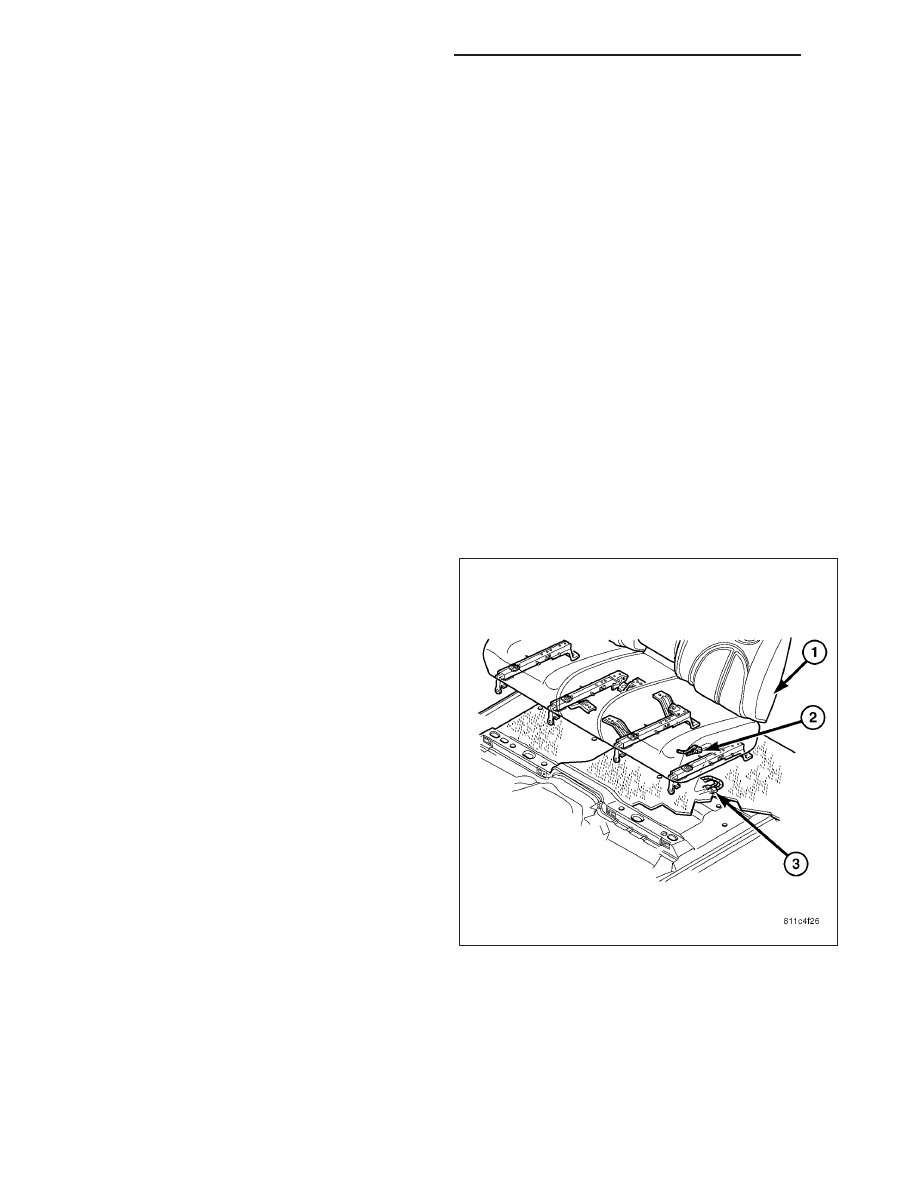Dodge Dakota (ND). Manual - part 251

HEATER-CUSHION PAD
DESCRIPTION
Vehicles equipped with the optional heated seat system have two, carbon fiber heated seat elements, located in
each front seat. One heating element is used for each seat cushion and another for each seat back.
Each of the heated seat element consists of multiple heating circuits operating in parallel throughout the carbon fiber
element. The heated seat elements are captured between the leather trim cover and the seat cushion assembly. If
a malfunction occurs in one or more of the individual carbon fiber circuits, the others will continue to provide heat.
The heated seat elements cannot be repaired. If found to be damaged or inoperative, a new heating element
assembly must be installed.
OPERATION
One end of the heated seat element is connected to ground at all times through a splice under the seat. Battery
current is directed to the other end of the heated seat element by the heated seat module. The heated seat module
will energize the heated seat element when the heated seat switch is depressed in the Low or High position.
As electrical current passes through the heated seat element, the resistance of the wire used in the element dis-
perses some of the electrical current in the form of heat. The heat produced by the heated seat element then radi-
ates through the underside of the seat cushion and seat back trim covers, warming the seat cover and its occupant.
DIAGNOSIS AND TESTING
HEATED SEAT ELEMENT
Refer to the appropriate wiring information for
complete circuit schematic or connector pin-out
information.
The wire harness connectors (2&3) for the heating
elements are located under the seat (1).
NOTE: When checking heated seat elements for
continuity, be certain to move the heating element
being checked. Moving the element, such as sit-
ting in the seat will eliminate the possibility of an
intermittent open in the element which would only
be evident if the element was in a certain position.
Failure to check the element in various positions
could result in an incomplete test.
1. Locate and disconnect the seat electrical connec-
tor.
2. Check the resistance between the circuit leading in
and out of the suspect heated seat element. The
resistance should be between 3.8 - 4.8 ohms for a
seat cushion element and 4.3 - 5.4 ohms for a seat
back element. If OK, (Refer to 8 - ELECTRICAL/
HEATED SEATS - DIAGNOSIS AND TESTING). If not OK, replace the inoperative heated seat element.
8G - 22
HEATED SEATS - SERVICE INFORMATION
ND